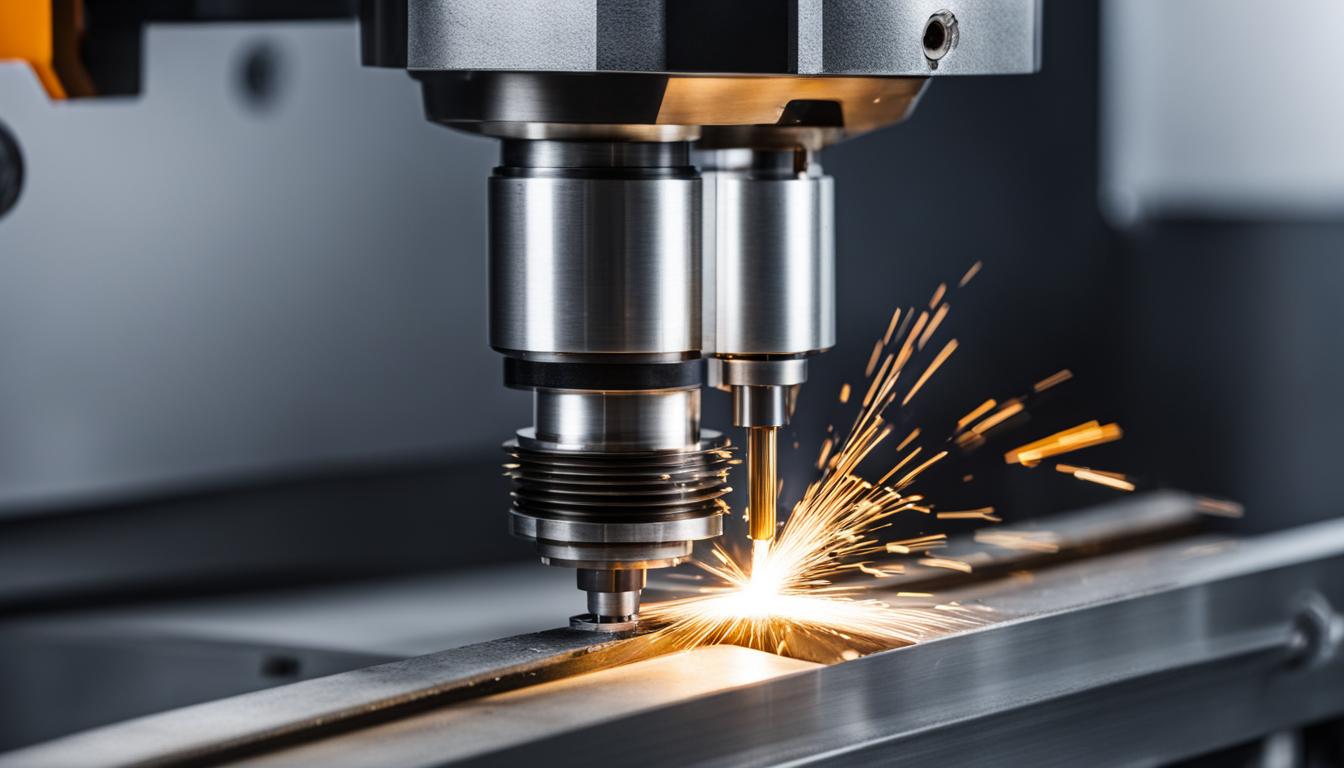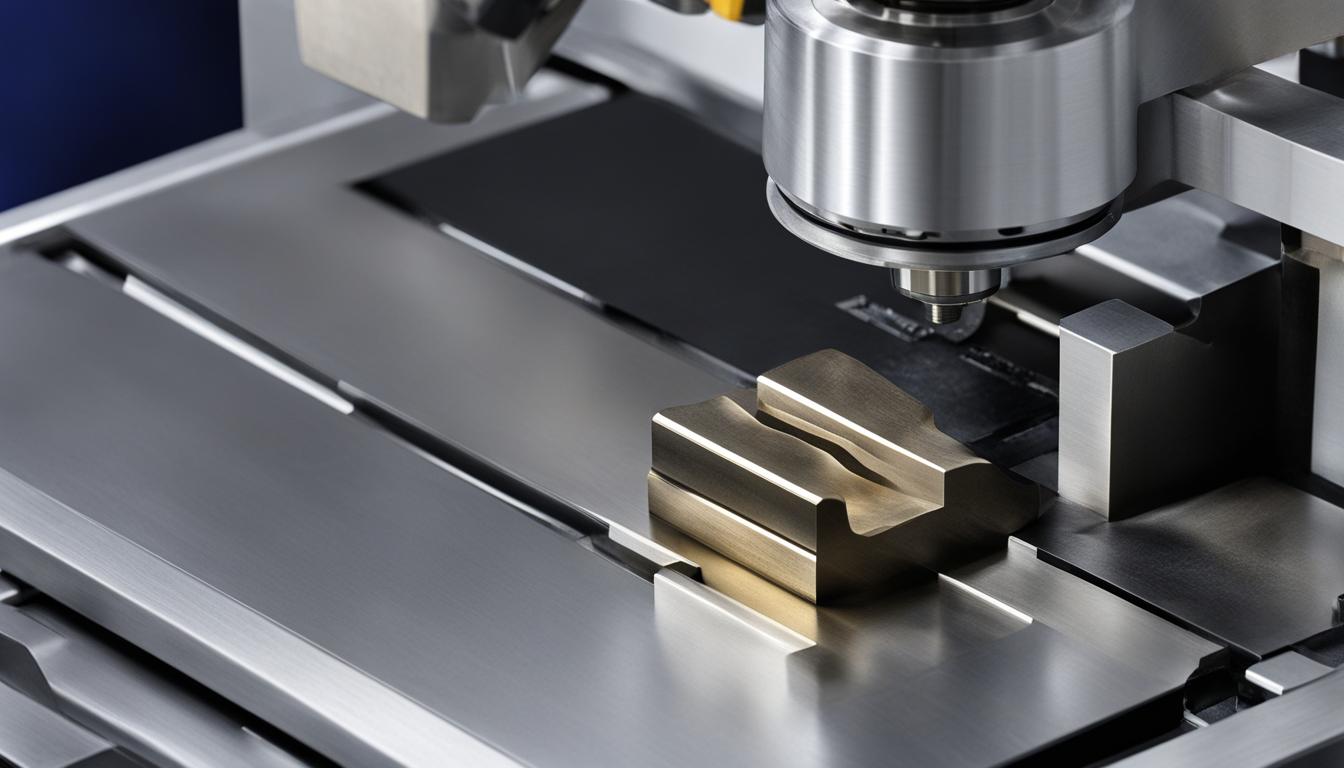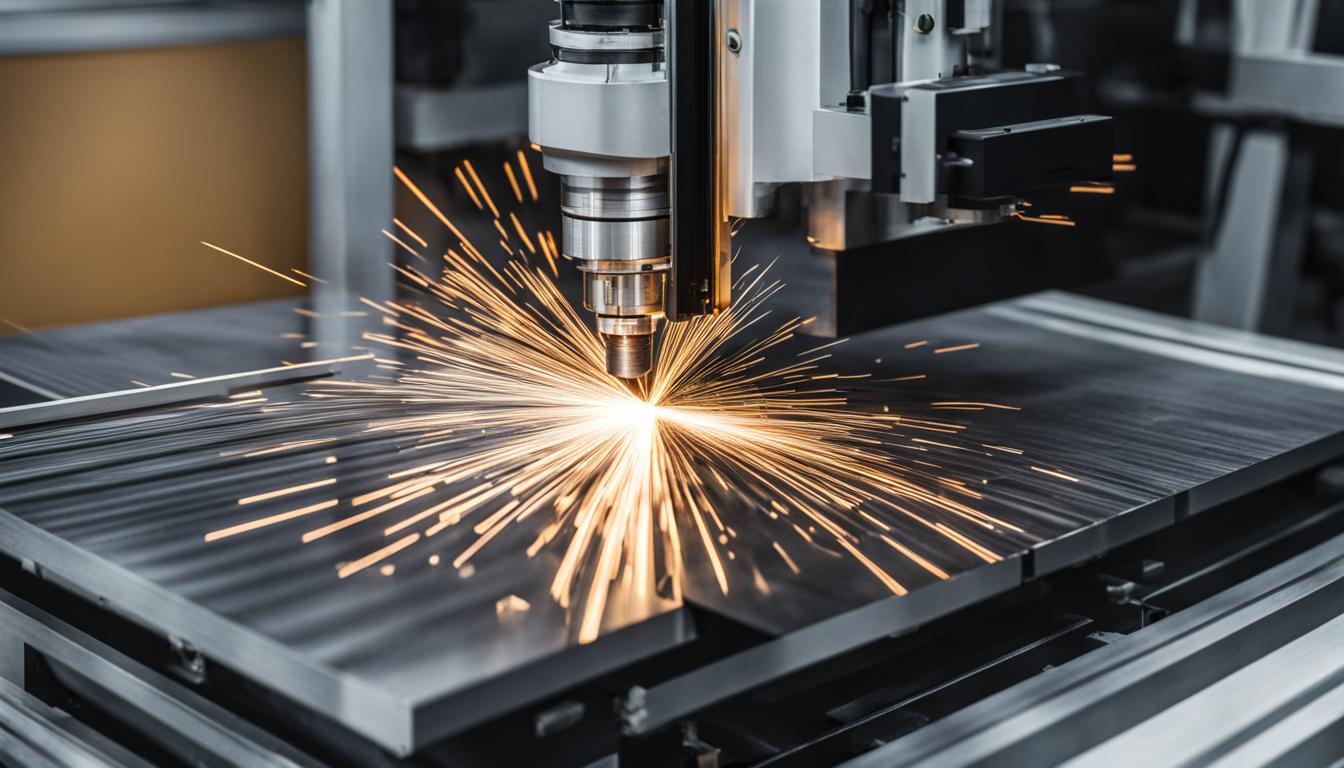Manufacturing with CNC machinery requires careful attention to design details. However, there are common mistakes that can hinder the manufacturing process and affect the quality of the final product. In this article, we will explore the top 10 biggest design mistakes for CNC machinery in the US and provide insights on how to avoid them. Whether you are a designer, engineer, or manufacturer, understanding these mistakes can help you optimize your CNC manufacturing process and improve the overall efficiency.
- Insufficient material allowances can lead to errors in cutting and sizing of parts.
- Overcomplicating designs can increase machining time and costs.
- Neglecting tolerance requirements can result in parts that don’t fit or meet quality standards.
- Inadequate consideration for tool access can cause additional setups and complexity.
- Ignoring the machinability of materials can lead to tool wear and poor surface finish.
Insufficient Material Allowances
One of the biggest design mistakes for CNC machinery is not accounting for sufficient material allowances. This can lead to parts being cut too small or even being completely cut through. It’s important to consider the tool diameter, cutter compensation, and material removal rates when designing parts for CNC machining.
Insufficient material allowances can result in several issues during the manufacturing process. When designing parts for CNC machining, it’s crucial to understand the dimensions and tolerances required for the final product. Without accounting for proper material allowances, the end result may not meet the desired specifications.
When determining the material allowances for CNC machining, it’s essential to consider the tool diameter. The tool used for cutting will remove a certain amount of material, and if this is not taken into account, the final dimensions of the part may be smaller than intended. Additionally, cutter compensation should be considered to ensure accurate and precise cuts. Material removal rates should also be accounted for to avoid overcutting or undercutting the part.
To optimize CNC manufacturing and avoid the design mistake of insufficient material allowances, designers should carefully calculate the required material allowances based on the tool diameter, cutter compensation, and material removal rates. By ensuring that the proper allowances are included in the design, the manufacturing process can proceed smoothly, resulting in high-quality parts that meet the desired specifications.
Material Allowances for Common CNC Machining Operations
| Machining Operation | Recommended Material Allowance |
|---|---|
| Face Milling | 0.3 – 0.5 mm |
| Drilling | 0.1 – 0.2 mm |
| Turning | 0.2 – 0.4 mm |
| Thread Milling | 0.2 – 0.3 mm |
Overcomplicating Designs in CNC: Common Errors in CNC Design Complexity
Overcomplicating designs is a common mistake in CNC manufacturing. Designers often fall into the trap of creating intricate and overly complex designs, thinking that it will result in a better end product. However, this approach can lead to several issues in the manufacturing process.
Firstly, complex designs require longer machining times, which can significantly increase production costs. The more intricate the design, the more time it takes for the CNC machine to execute the necessary operations. This not only adds to the manufacturing time but also increases the wear and tear on the machine itself.
Secondly, intricate designs can also introduce potential issues in the cutting process. The more complex the geometry, the greater the likelihood of errors or inconsistencies in the machining of the part. This can result in parts that do not meet the required specifications, leading to wastage and rework.
Impact on Efficiency and Cost
To optimize the manufacturing process, it is crucial to simplify designs and reduce unnecessary features. By streamlining the design, you can achieve several benefits. Firstly, it improves efficiency by reducing machining time and minimizing the risk of errors. Secondly, it lowers production costs by reducing material waste and minimizing machine wear and tear.
Additionally, simplifying designs can also enhance the overall quality of the end product. By focusing on essential features and eliminating unnecessary complexities, you can ensure better precision and consistency in the manufactured parts.
Overall, when designing for CNC manufacturing, it is crucial to strike a balance between functionality and complexity. While it’s important to incorporate the necessary features, it’s equally important to avoid overcomplicating designs. By taking a simplified approach, you can improve efficiency, reduce costs, and achieve higher quality outcomes in CNC manufacturing.
Neglecting Tolerance Requirements
Neglecting tolerance requirements is a critical design mistake in CNC manufacturing. Failing to specify the correct tolerances can result in parts that don’t fit together properly or fail to meet the required quality standards. It’s essential to clearly define and communicate the tolerance requirements for each part.
Importance of Tolerance Requirements
Tolerance requirements play a crucial role in CNC manufacturing as they determine the allowable variation in dimensions and ensure proper fit and functionality of the final product. Neglecting these requirements can lead to costly rework, production delays, and compromised product performance.
When designing parts for CNC machining, it’s important to consider the specific tolerance limits for critical dimensions such as hole diameters, shaft sizes, and mating surfaces. This information should be clearly communicated to the CNC machine operator to ensure accurate machining and adherence to quality standards.
Additionally, it’s important to consider the capabilities of the CNC machine and the chosen manufacturing process when setting tolerance requirements. Different machine types and processes may have specific limitations, and understanding these limitations can help avoid design mistakes that may lead to out-of-spec parts.
| Tolerance Mistake | Consequences |
|---|---|
| Neglecting tight tolerances | Parts may not fit together properly or may have excessive play, leading to impaired functionality and reduced product quality. |
| Specifying excessive tolerances | Parts may have loose fits, compromising performance and potentially leading to improper functioning or failure. |
| Failing to consider cumulative tolerances | Individual parts may meet tolerance requirements, but when assembled, they may result in cumulative errors that cause misalignment or other issues. |
By paying careful attention to tolerance requirements and collaborating closely with the CNC machine operator, designers can ensure the production of high-quality parts that meet the desired specifications.

Inadequate Consideration for Tool Access in CNC Design
One of the critical design errors in CNC manufacturing is inadequate consideration for tool access. Designing parts without taking into account the proper accessibility of tools can lead to various issues during the machining process. When the tool cannot reach certain areas of the part, it may require additional setups or more complex machining techniques, resulting in increased time and cost.
Ensuring adequate tool access is crucial for efficient manufacturing. By carefully planning and designing for proper tool access, manufacturers can avoid unnecessary complications and delays in the machining process. This includes considering factors such as the clearance needed for the tool, the size and shape of the part, and the machining operations that will be performed.
Impact on Manufacturing Efficiency
Inadequate consideration for tool access can have a significant impact on manufacturing efficiency. When parts are not designed with proper tool access in mind, it can lead to longer machining times and increased labor costs. Machinists may need to use specialized tools, modify existing tools, or perform multiple setups to reach inaccessible areas, all of which can slow down the production process.
Additionally, inadequate tool access can also result in decreased machining accuracy and poor surface finish. When the tool cannot reach certain areas of the part effectively, it can lead to inconsistencies in cutting, resulting in dimensional inaccuracies and rough surfaces. These issues can affect the overall quality of the finished part and may require additional post-processing or rework.
Considerations for Tool Access in CNC Design
To address the design errors related to tool access in CNC manufacturing, there are several considerations that should be taken into account:
- Design parts with clearances and access holes to allow tools to reach all necessary areas.
- Consider the size and shape of the tool to ensure it can reach into tight spaces or around complex geometries.
- Take into account the reach limitations of the CNC machine and its specific tooling.
- Collaborate with the CNC programmer and machinist to understand the limitations and capabilities of the machine.
By integrating these considerations into the design process, manufacturers can optimize tool access and improve the overall efficiency and quality of their CNC manufacturing operations.
| Impact of Inadequate Tool Access in CNC Design | Considerations for Tool Access in CNC Design |
|---|---|
| Longer machining times | Design parts with clearances and access holes |
| Increased labor costs | Consider the size and shape of the tool |
| Decreased machining accuracy | Take into account machine reach limitations |
| Poor surface finish | Collaborate with CNC programmer and machinist |

Ignoring Machinability of Materials in CNC Design
When it comes to CNC manufacturing, one of the common design mistakes is ignoring the machinability of materials. Different materials have varying properties and behaviors during the machining process, and failing to consider this can lead to various issues. It is important to select materials that are suitable for CNC machining to ensure a smooth and efficient manufacturing process.
By ignoring the machinability of materials, you may encounter problems such as excessive tool wear, poor surface finish, or even damage to the machine itself. Each material has its own unique characteristics, and understanding how they will behave during the machining process is crucial for successful CNC manufacturing.
To avoid this design mistake, it is essential to research and choose materials that are known to have good machinability. Consider factors such as the material’s hardness, thermal conductivity, and chip formation characteristics. Additionally, collaborate with material suppliers and CNC machining experts to gain insights and recommendations on the best materials for your specific manufacturing needs.
Table: Machinability of Common CNC Materials
| Material | Machinability Rating |
|---|---|
| Aluminum | Excellent |
| Brass | Very Good |
| Steel | Good |
| Titanium | Fair |
| Plastics | Varies depending on type |
Note: The machinability ratings provided in the table are general guidelines and may vary based on specific alloys and compositions.
Poor Fixture Design
Poor fixture design is a common error in CNC manufacturing that can have significant consequences on the overall machining process. Fixtures are essential components that hold workpieces in place during cutting operations, ensuring accuracy and repeatability. However, when fixtures are poorly designed, it can result in parts moving or vibrating during the cutting process, leading to inaccuracies and poor surface finish.
One of the key factors in fixture design is stability. Fixtures need to provide adequate support and secure the workpiece firmly to prevent any movement or vibrations. Insufficient support can cause the workpiece to shift, leading to dimensional errors and compromising the quality of the final product. It is essential to consider the size, weight, and material of the workpiece when designing the fixture to ensure optimal stability.
Another common mistake in fixture design is neglecting accessibility. Fixtures should allow for easy and unobstructed access to the cutting tool, enabling efficient machining. If the fixture blocks or restricts the tool’s path, it may require additional setups or more complex machining techniques, resulting in increased time and cost. Designing fixtures with proper clearance and accessibility for the cutting tool is crucial for successful CNC manufacturing.
A well-designed fixture not only ensures stability and accessibility but also considers the specific requirements of the machining process. This includes factors such as coolant flow, chip evacuation, and fixture material compatibility with cutting fluids. Ignoring these considerations can lead to issues such as poor chip evacuation, reduced tool life, and even damage to the fixture itself. By addressing these aspects during the fixture design phase, manufacturers can optimize the CNC machining process and enhance overall productivity.
| Common Errors in CNC Fixture Design | Impact |
|---|---|
| Inadequate support and stability | Workpiece movement, dimensional errors, poor surface finish |
| Lack of accessibility for cutting tool | Additional setups, increased machining time and cost |
| Failure to consider process requirements | Poor chip evacuation, reduced tool life, fixture damage |
Incorrect Feeds and Speeds
Choosing the incorrect feeds and speeds is a common mistake in CNC machining. Feeds and speeds refer to the rate at which the cutting tool moves through the material and the rotational speed of the tool, respectively. These parameters play a crucial role in achieving optimal results in CNC machining, including desired surface finish, tool life, and overall productivity.
When feeds and speeds are set too high, it can result in excessive tool wear, reduced tool life, and poor surface finish. On the other hand, using feeds and speeds that are too low can lead to inefficient machining processes, longer cycle times, and decreased productivity.
To avoid these design mistakes related to feeds and speeds, it’s important to consider various factors. The material being machined, tool materials, tool diameter, and cutting parameters should all be taken into account when determining the appropriate feeds and speeds. Additionally, consulting machining experts or utilizing software tools and calculators specifically designed for feeds and speeds optimization can help ensure accurate and efficient machining processes.
Benefits of Optimized Feeds and Speeds
Using the correct feeds and speeds in CNC machining offers several benefits. Firstly, it improves productivity by reducing cycle times and increasing material removal rates. By optimizing feeds and speeds, manufacturers can achieve faster machining processes and meet production requirements more efficiently.
Secondly, accurate feeds and speeds help prolong the life of cutting tools. When the cutting tool moves at the appropriate rate and the tool’s rotation speed matches the material being machined, it reduces tool wear and extends the overall lifespan of the tool. This leads to cost savings by minimizing tool replacement and downtime.
Lastly, optimizing feeds and speeds ensures consistent and high-quality surface finishes. By setting the correct parameters, manufacturers can achieve smooth and precise cuts, resulting in parts that meet the required dimensional and surface finish specifications.
| Benefits of Optimized Feeds and Speeds | Keywords |
|---|---|
| Improved productivity | improved productivity in CNC machining, increased material removal rates |
| Prolonged tool life | prolonged cutting tool lifespan in CNC machining |
| High-quality surface finishes | high-quality surface finishes in CNC machining, precise cuts |
Lack of Design for Manufacturability in CNC
When it comes to CNC manufacturing, one of the most common mistakes is the lack of design for manufacturability. This means that the designs are not optimized to be easily and efficiently produced using CNC machinery. Failing to consider manufacturability can result in increased costs, longer lead times, and potential issues during production.
One of the key aspects of designing for manufacturability is considering tool accessibility. If certain areas of the part are difficult to reach with the tool, it can lead to additional setups or even more complex machining techniques, which can significantly impact the time and cost of production. By taking tool accessibility into account during the design phase, you can ensure a smoother and more efficient manufacturing process.
Another important factor to consider is material selection. Different materials have varying properties and behaviors during the machining process. Failing to choose materials that are suitable for CNC machining can result in excessive tool wear, poor surface finish, or even damage to the machine itself. By selecting materials with good machinability, you can optimize the manufacturing process and improve the overall quality of the finished parts.
Lastly, it’s crucial to take into account the manufacturing capabilities of the CNC machinery. Each machine has its own limitations and specifications, and failing to design within these constraints can lead to issues during production. By understanding the capabilities of the CNC machinery and designing accordingly, you can avoid potential roadblocks and ensure a more seamless manufacturing process.
